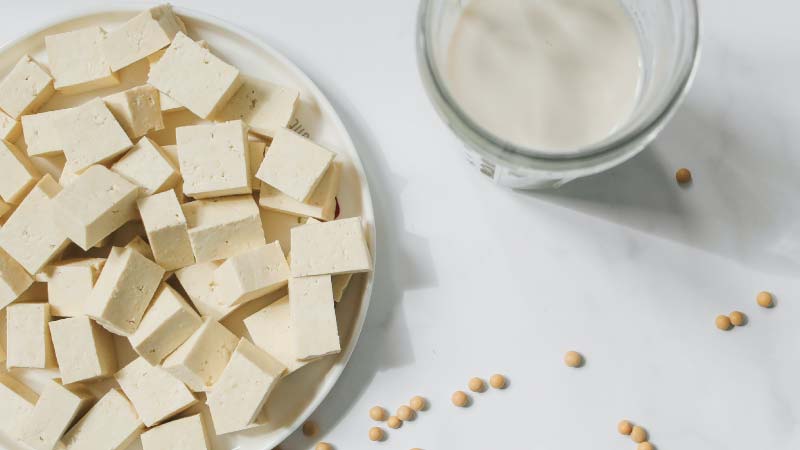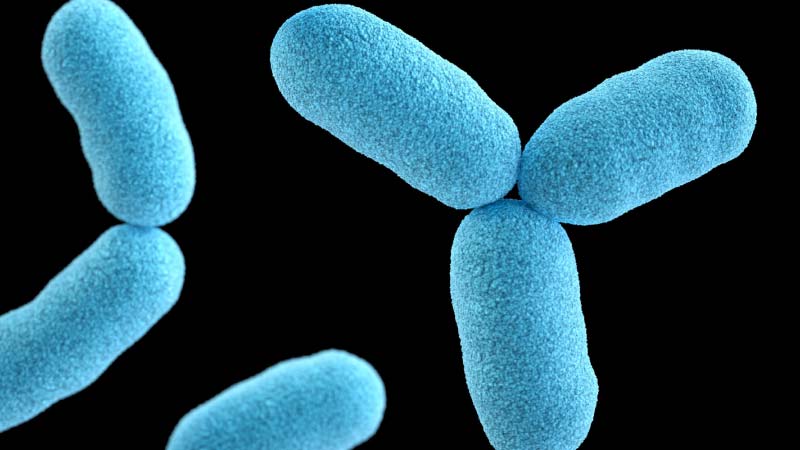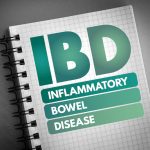Therapeutic diets are becoming increasingly common in the management of many different health conditions, and for good reason – the relationship between diet and health is key! As far as therapeutic diets go, the FODMAPs diet is a relatively common one that many people have heard of. But what exactly is it, and more importantly, what is it good for? In this blog post, we dive into all things FODMAPs and the health conditions it can help with.
What are FODMAPS?
FODMAPs (fermentable oligosaccharides, disaccharides, monosaccharides, and polyols) are a group of sugars and carbohydrates that are not well broken down in the digestive tract, because our bodies lack the required enzymes to digest them. Because they are undigestible, FODMAPs travel slowly through the intestinal tract, absorbing water and slowly fermenting as microbes in our gut consume them as a food source. Of course, this probably sounds familiar – this is exactly what fibre in our diet does! Some FODMAPs, such as inulin, are even considered to be important prebiotic foods, which help to feed our all-important gut bacteria. The role of FODMAPs in health and disease can be confusing for this exact reason. We have been taught that undigestible carbohydrates (such as fibre) are beneficial for our health, and this is definitely true. The issue with FODMAPs, however, relates to just how much of these foods our bodies can handle. Before we look into the negative effects a high FODMAPs diet can have for some individuals, let’s take a look at the different types of FODMAPs and the foods they are found in.
Oligosaccharides
Oligosaccharides such as fructans and galactooligosaccharides (GOS) are found in a range of foods, including nectarines, watermelon, artichokes, garlic, onions, chickpeas, kidney beans, lentils, pistachios, cashews, wheat, barley, and rye. Inulin is a common example of an oligosaccharide.
Disaccharides
The main disaccharide in the FODMAPs diet is lactose, commonly found in dairy products like milk, ice cream, yoghurt, and soft cheeses such as ricotta and cottage cheese. Lactose intolerance is very common, as around 65% of adults do not produce sufficient amounts of lactase, the enzyme required to breakdown lactose in the digestive tract. In the majority of cases, this is largely down to genetics – we simply produce less and less lactase as we age.
Monosaccharides
The main monosaccharide the FODMAPs diet is concerned with is fructose. Whilst we are able to digest fructose, there is a limit to how much can be broken down at once – this is why eating too much fruit in one sitting can cause loose bowels. Although fructose is found in most fruits, it’s only foods that are especially high in fructose that are of concern. These are foods such as honey, apples, boysenberries, figs, mangoes, pears, watermelon, asparagus, artichokes, and dried fruits.
Polyols
Polyols are a type of sugar called a sugar alcohol. They are found in some fruits and vegetables, such as apples, apricots, blackberries, plums, cauliflower, mushrooms, and snow peas, but are also found in high amounts as artificial sweeteners in processed foods. Some of these, like xylitol, sorbitol, and mannitol, you may recognise, as they are frequently used in “low sugar” foods.
As you can see, the list of foods containing FODMAPs is quite extensive!

How Do FODMAPs Affect Health?
FODMAPs and the foods they are found in aren’t inherently bad for our health – it’s a matter of individual tolerance. Whilst some people can consume these foods in relatively high amounts, others have a lower threshold, usually to one or two FODMAPs in particular, and need to eat less of these to avoid symptoms. So how exactly do FODMAPs cause symptoms? FODMAPs move slowly through the digestive tract, accumulating water and fermenting. The high amount of water in the gut combined with gases like hydrogen and methane that are produced by fermentation causes bloating. This bloating stimulates receptors in the digestive tract, causing abdominal pain.
However, there is more to the story than just bloating, with high FODMAPs diets being implicated in inflammation, dysbiosis, and even leaky gut. Whilst FODMAPs don’t cause inflammation directly, eating them in too high amounts can lead to inflammation by triggering changes to our intestinal microbiome, an issue called dysbiosis. Studies on mice have shown that high FODMAPs diets allow “bad” bacteria to proliferate by providing too much food for them. These bad bacteria produce harmful substances called lipopolysaccharides, which trigger inflammation and damage the lining of the gut. This damage, also known as “leaky gut”, leaves us at risk of absorbing harmful substances from the gastrointestinal tract. FODMAPs have also been shown to increase histamine levels in the gut by feeding bacteria that produce histamine and activating mast cells. Histamine triggers inflammation and acts as a signalling chemical, causing pain signals to be sent to the brain.
It’s important to remember, however, that many of the foods that are high in FODMAPs are not inherently bad! Each individual has a unique tolerance limit for foods, and that is true here, too. Eating a diet that is too high in FODMAPs for your individual tolerance is the issue, more so than it is the foods themselves.

What Other Conditions Can Lead to an Intolerance in FODMAPS?
In order for carbohydrates found in some FODMAPs to be properly digested, the “brush border” of the small intestine must produce specific enzymes. If the brush border and the villi are damaged, then you will not properly produce these enzymes and the space usually available for absorption into your body is reduced. This means that less food is absorbed and more stays within your small intestine, providing more fuel or food sources for bacteria to feed on. Conditions that can cause small intestinal brush border damage include Celiac Disease, Endometriosis, Crohn’s disease, Food allergies and intolerances, infections such as Helicobacter pylori, giardia and more. In addition, certain medications are known to damage this brush border. Due to this, often when the small intestinal wall and brush border is healed and the initial causes are removed, FODMAP’s can return to the diet.

What Conditions are Helped by a Low FODMAPs Diet?
Irritable Bowel Syndrome (IBS)
IBS is the condition most commonly associated with FODMAPs and the majority of FODMAPs studies have focused on its relevance to IBS. Extensive randomised controlled trials have demonstrated that the FODMAPs diet can help to reduce IBS symptoms, as well as reducing inflammatory markers that affect the lining of the digestive tract.
Inflammatory Bowel Diseases
Inflammatory bowel diseases such as Crohn’s disease and ulcerative colitis are chronic gastrointestinal conditions that involve significant inflammation in part or all of the digestive tract, leading to leaky gut, ulceration, abdominal pain and diarrhoea, and can have a significant impact on quality of life. Low FODMAPs diets have been shown to reduce symptom severity and improve quality of life for patients with these conditions.

Dysbiosis and SIBO
As discussed above, FODMAPs affect the intestinal microbiome by providing food sources for certain types of bacteria, which can tip the balance of bacteria towards more harmful bacteria types as well as produce an overgrowth of healthy species.
Non-Coeliac Gluten Sensitivity (NCGS)
NCGS is a condition where ingestion of gluten-containing foods triggers symptoms such as abdominal pain, nausea and diarrhoea or constipation, without the autoimmune pathology associated with coeliac disease. Evidence suggests this condition may also be triggered by certain high FODMAPs foods for some individuals, and a recent study showed that a low FODMAPs diet helped to reduce inflammatory markers in patients with NCGS.
Endometriosis
Endometriosis is a complex, painful condition associated with autoimmune factors, whereby the body transplants endometrial tissue into areas outside of the uterus. Using a low FODMAPs diet as part of the treatment strategy for managing endometriosis has shown promise, because of the way it is able to reduce inflammation and visceral pain.
Histamine Intolerance
As discussed above, excess FODMAPs in the diet leads to increased histamine levels by activating mast cells and feeding bacteria that produce histamine. Reducing FODMAPs in the diet can reduce histamine levels by up to eight-fold, improving symptoms for patients with histamine intolerance.

Is a Low FODMAPs Diet Forever?
The good news is a low FODMAPs diet isn’t a permanent diet to follow. The list of foods that are high in FODMAPs is extensive – eliminating all of these foods permanently would result in an exceedingly restricted diet and would put you at risk of nutritional deficiencies. Eliminating this many foods also reduces your intake of important prebiotics, which feed gut bacteria. Whilst in the short term for conditions such as SIBO, this can be beneficial, in the long term this would be detrimental to health by damaging the microbiome. Instead, low FODMAPs diets are generally strictly adhered to for a set period of time (e.g. 6-12 weeks). At the end of this time, foods are “tested” via controlled reintroduction, to see if your body reacts to them. This way, you can find out exactly which foods your body isn’t tolerating. In the long term, your diet will require you to avoid the foods you don’t tolerate, in order to manage your symptoms and allow your body to heal.
And don’t forget that healing the gut wall so that absorption is normalised is a very important treatment strategy. Fixing the cause is crucial.
Because of the restrictive nature of a low FODMAPs diet, it’s really important to make sure you are under the care of a qualified health care practitioner before beginning this diet. A qualified naturopath can help to identify if a FODMAPs diet is appropriate for you, by referring you for testing such as hydrogen and methane breath testing.
How Can I Find Out More?
Have you tried dietary interventions to assist with bloating, abdominal pain, IBS, or other health conditions? If you feel your health may benefit from dietary changes, it’s important to speak with a healthcare professional before you begin. Book an appointment with Tanya today to discuss how dietary interventions may help you improve your health.
References
Ajamian, M., Rosella, G., Newnham, E. D., Biesiekierski, J. R., Muir, J. G., & Gibson, P. R. (2021). Effect of gluten ingestion and FODMAP restriction on intestinal epithelial integrity in patients with irritable bowel syndrome and self-reported non-coeliac gluten sensitivity. Molecular Nutrition and Food Research, 65(5).
Albert-Bayo, M., Paracuellos, I., Gonzalez-Castro, A. M., Rodriguez-Urrutia, A., Rodriguez-Lagunas, M. J., Alonso-Cotoner, C., Santos, J., & Vicario, M. (2019). Intestinal mucosal mast cells: Key modulators of barrier function and homeostasis. Cells, 8(2). https://doi.org/10.3390/cells8020135
Halmos, E. P., Power, V. A., Shepherd, S. J., Gibson, P. R., & Muir, J. G. (2014). A diet low in FODMAPs reduces symptoms of irritable bowel syndrome. Gastoenterology, 146(1), 67–75.
Lomer, M. C. E. (2015). Review article: The aetiology, diagnosis, mechanisms and clinical evidence for food intolerance. Alimentary Pharmacology and Therapeutics, 41(3), 262–275.
Monash University. (2019). FODMAPs and irritable bowel syndrome. https://www.monashfodmap.com/about-fodmap-and-ibs/#:~:text=FODMAPs%20are%20a%20group%20of,producing%20gas%20as%20a%20result.
Reddel, S., Putignani, L., & Del Chierico, F. (2019). The impact of low-FODMAPs, gluten-free, and ketogenic diets on gut microbiota modulation in pathological conditions. Nutrients, 11(373). https://doi.org/10.3390/nu11020373
Singh, P., Zhou, S.-Y., Grabauskas, G., Zheng, W., Zhang, Y., & Owyang, C. (2020). Role of mast cells in FODMAP-induced colonic epithelial barrier dysfunction and mucosal inflammation. The American Journal of Gastroenterology, 115(p S245). https://doi.org/10.14309/01.ajg.0000704012.96691.44
Vandeputte, D., & Joossens, M. (2020). Effects of low and high FODMAP diets on human gastrointestinal microbiota composition in adults with intestinal diseases: A systematic review. Microorganisms, 8.
Zhou, S.-Y., Gililland, M., Wu, X., Leelasinjaroen, P., Zhang, G., Zhou, H., Ye, B., Lu, Y., & Owyang, C. (2018). FODMAP diet modulates visceral nociception by lipopolysaccharide-mediated intestinal inflammation and barrier dysfunction. The Journal of Clinical Investigation, 128(1).











